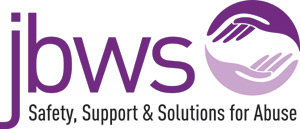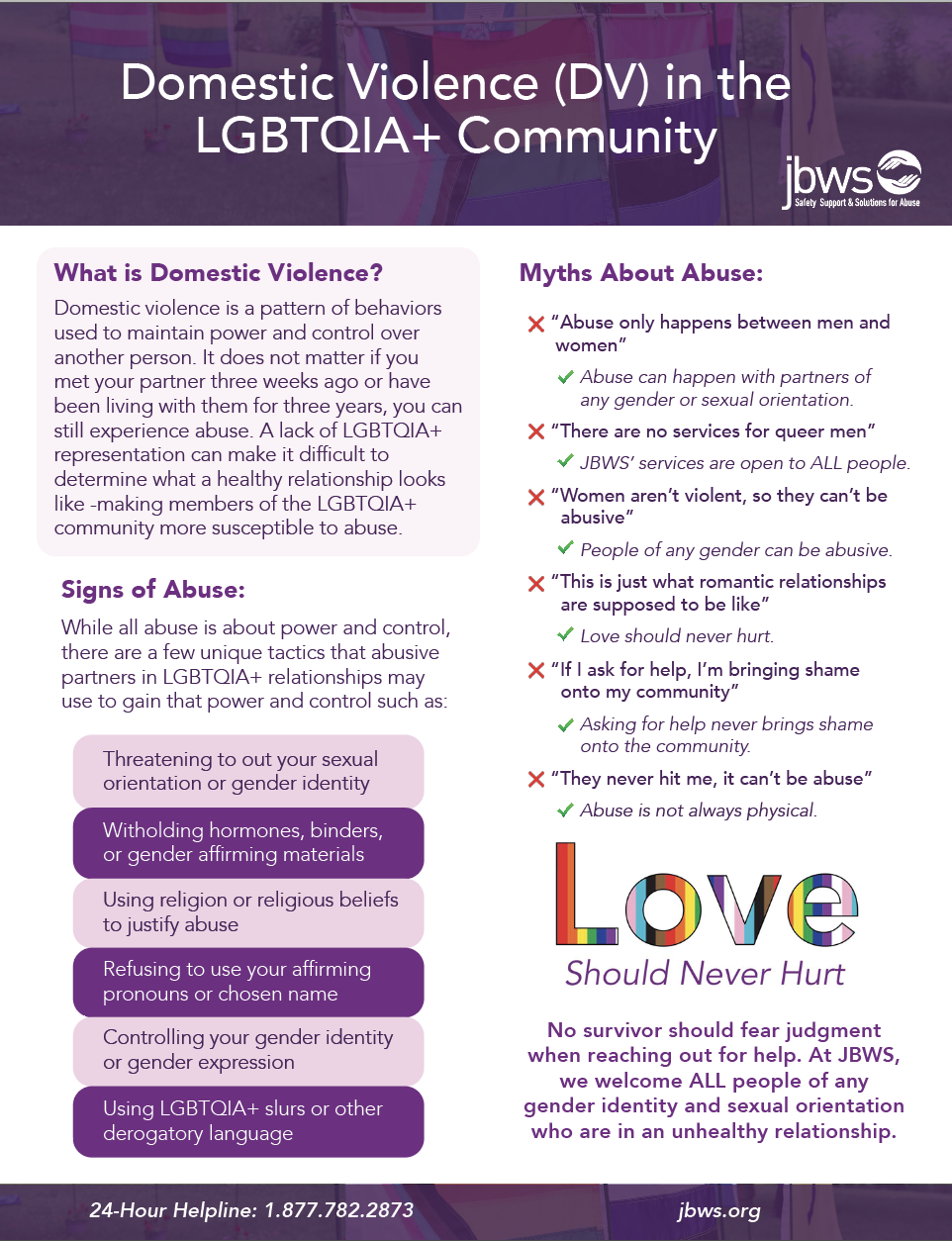DV in the LGBTQIA+ Community
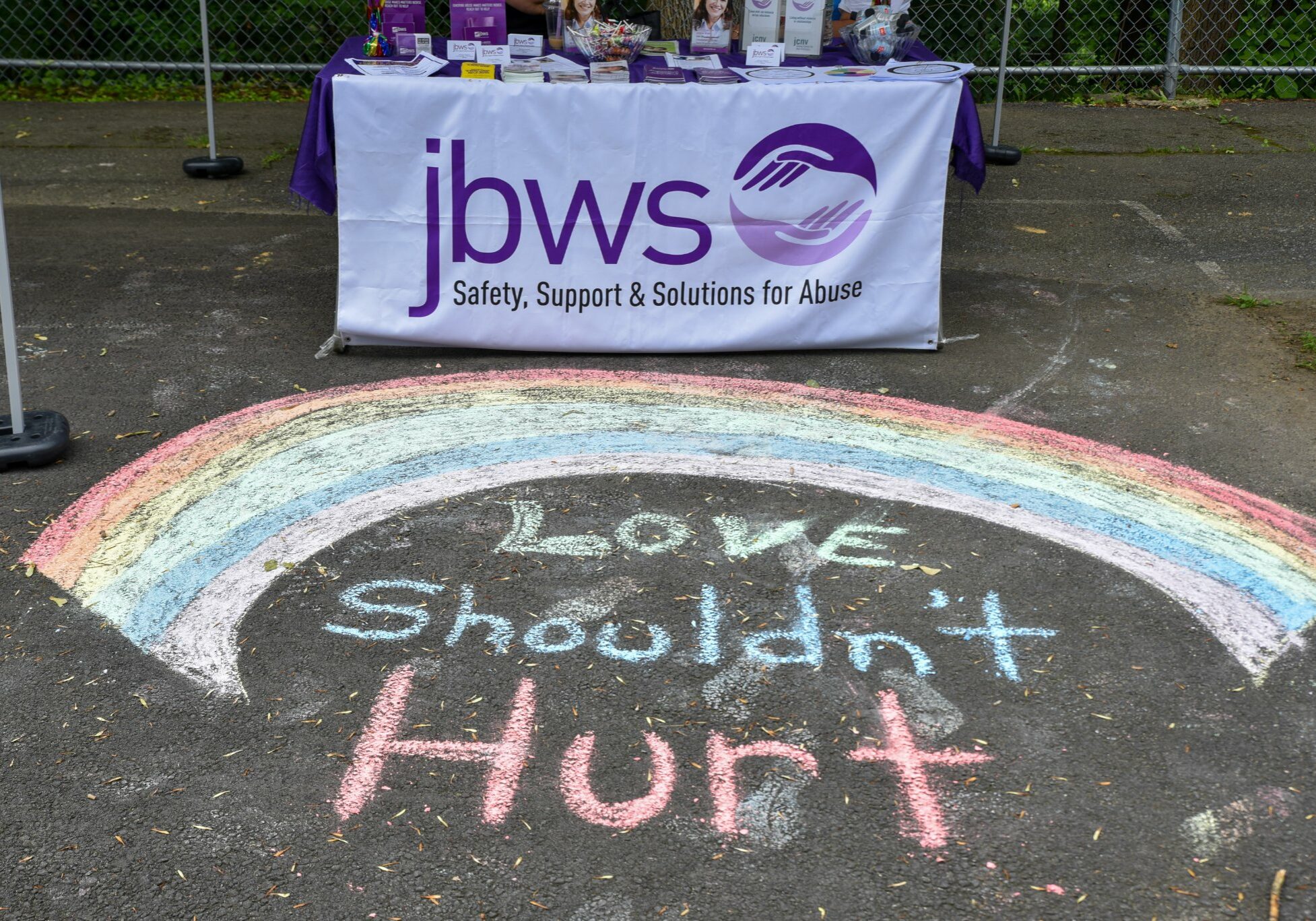
What is Domestic Violence?
Domestic violence is a pattern of behaviors used to maintain power and control over another person. While this remains true for members of the LGBTQIA+ community, there are a few unique tactics that abusive partners may implement in these relationships.
Since there is significantly less representation of LGBTQIA+ couples than heterosexual ones, it can be difficult to determine what a healthy relationship looks like in these contexts. Unfortunately, this can make it easier for abuse to occur because the person experiencing it may genuinely believe this behavior is normal. Additionally, their loved ones may not know how best to offer support.
Signs of Abuse in the LGBTQIA+ Community.
While the list below specifically refers to abusive behaviors that can be present in LGBTQIA+ relationships, any number of abusive behaviors can exist within these relationships. For information about more types of abuse, click here.
This can be done by making comments about their identity such as: "you'll never pass for a real man" and "no one else would date a bisexual" or undermining their identity by saying: "you've been with men before so you're not really a lesbian."
An abusive partner may withhold access to gender affirming hormone therapy such as estrogen and testosterone.
If a person's sexuality or gender identity is not public knowledge, an abusive partner may threaten to out these parts of their identity to instill a sense of fear in them and control their behavior.
Especially if it's a person's first relationship with a same sex partner or first relationship living as their true self, an abusive partner may insist that this behavior is a normal part of a same-sex relationship. For instance, "You want to be treated like a real man, this is how real men are treated in relationships."
If faith is important to the person experiencing abuse, their partner may claim their sexuality/gender identity is a sin, say they "deserve the abuse" because of their orientation/gender identity, or insist that no one will help them because of how they identify.
An abusive partner may call a person slurs relating to their gender identity or sexual orientation to make them feel ashamed. They may also refuse to use proper pronouns or call their partner "it" with the intention of devaluing their partner's identity.

Myths About Dating Abuse in the LGBTQIA+ Community.
Because domestic violence is frequently positioned as an issue that occurs between heterosexual, cisgendered men and women, many members of the LGBTQIA+ community might believe that they cannot experience abuse. Due to their sexual orientation or gender identity, many members of the LGBTQIA+ community may not think that services are meant for them or they may believe their identities excludes them from experiencing abuse. Additionally, if it's their first relationship that aligns with their identity, then they may believe that all "real" relationships are like this.
None of these myths are true, but an abusive partner might make you believe:
X "I'm a lesbian, women can't be abusive."
X "This is just what relationships are supposed to be like."
X "I'm a queer man, services don't exist for me."
X "I'm being punished for being in a sinful relationship."
X "Women don't use physical violence, this couldn't be abuse"
X "I won't fit in at a women's shelter."
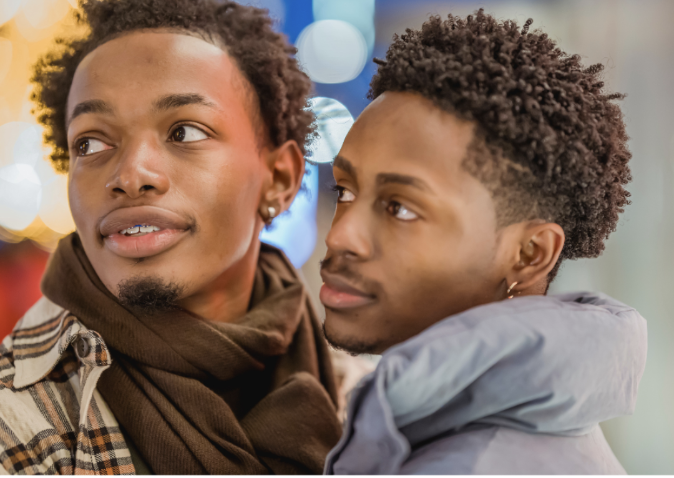

Barriers To Seeking Assistance
Members of the LGBTQIA+ community may face numerous barriers when seeking assistance, including bi/homo/transphobia and a general lack of appropriate training in regard to the queer/trans community. When a survivor calls for help, they shouldn’t have to wonder if the staff member or service provider will judge them for their sexual orientation or gender identity. Additionally, some queer/trans survivors may shy away from talking about the abuse they experienced out of fear that it will fuel anti LGBTQIA+ bias or take away from progress within the community. However, domestic violence does not discriminate and can occur in all types of relationships.
At JBWS, we feel passionately about educating our community about LGBTQIA+ friendly resources and making it known that we serve ALL survivors of domestic violence. No survivor should have to question whether they will be accepted by a service provider. All are welcome at JBWS, where we recognize your gender identity and sexual orientation are a part of your story, and not a barrier to our services. Love should never hurt, help is available. Call our 24-Hour Helpline: 1.877. 782. 2873
Barriers Trans Men Face
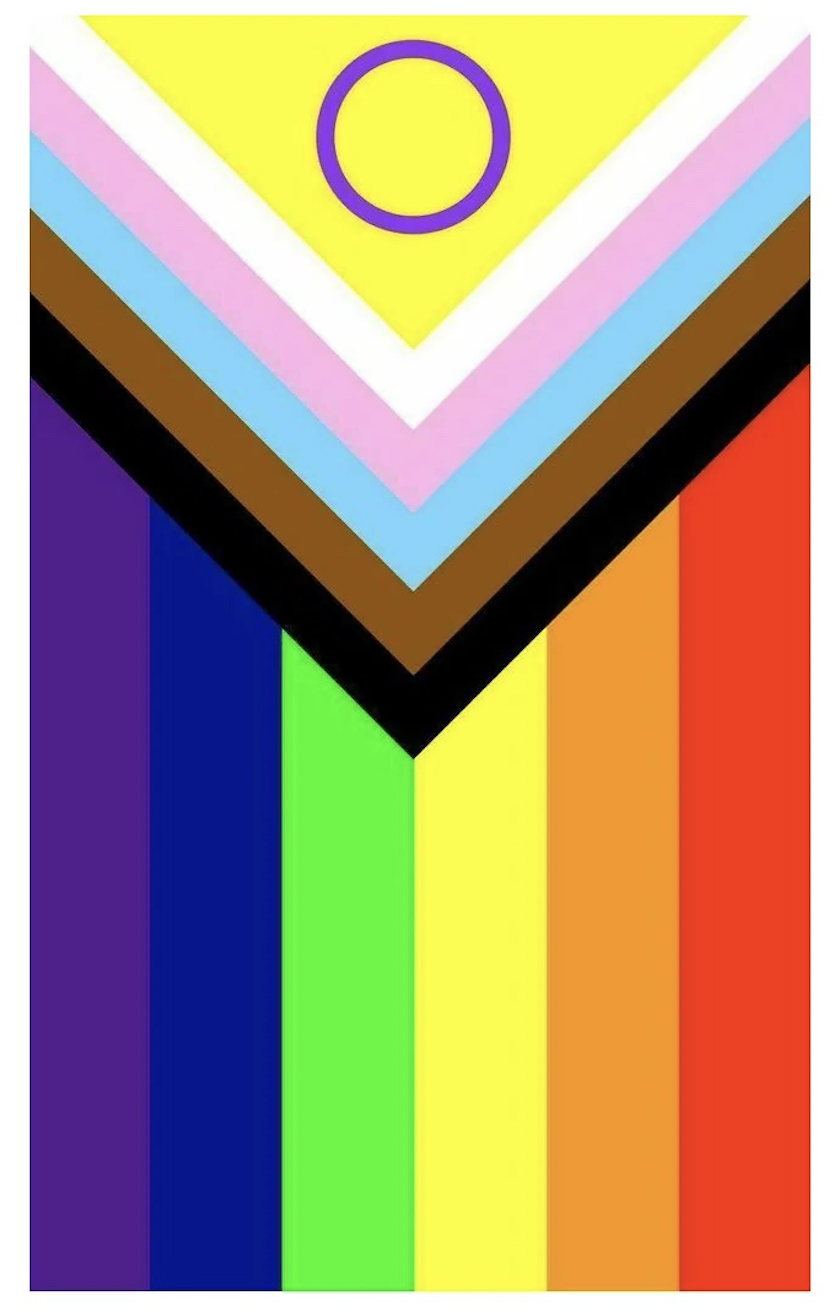
What does LGBTQIA+ stand for?
To effectively express concern for a member of the LGBTQIA+ community, it's important to first understand what LGBTQIA+ refers to:
What forms of abuse are unique to:
Asexual Victims:
An asexual person may face specific abusive tactics because of their identity. Such as:
- Threatening to "out" their identity to their community
- Claiming something is wrong with them for not being interested in sexual activity
- Mocking their body for not responding to sexual acts
- Touching their body or specific body parts without permission
- Threatening to “cure” their asexuality through sexual assault
- Claiming their asexuality stems from no one wanting to be in a relationship with them or sleep with them
Intersex Victims:
Abuse based on ignorance and bigotry is common for intersex victims of abuse. Their abusive partner may use an intersex person’s identity against them. For instance:
- Threatening to “out” them as intersex to their community
- Pressuring a victim to have surgeries or take medication to conform to specific sexual characteristics
- Using their identity to invalidate their sexuality. “You’re intersex so you can’t be gay”
- Pressuring the victim to adhere to gender stereotypes
Transgender Victims:
Transgender people are at particular risk of intimate partner violence, with 54% of transgender people reporting they have experienced coercive control and physical harm. Other signs of abuse are:
- Forbidding the victim from revealing that they are transgender
- Threatening to out their gender identity to their community
- Justifying sexual abuse by saying, “this is how real men/women like sex”
- Referring to the victim as “it” or belittling their experience
- Mocking how their body looks and how it doesn’t “match” their identity
- Denying access to gender affirming medical treatment or accessories

DV is not exclusive to monogamy
Because polyamorous and non-monogamous relationships exist outside of the traditional relationship standards, it can be difficult to have a clear idea of what a healthy non-monogamous relationship looks like. This can make it more challenging to identify abusive or unhealthy behaviors in these relationships. Since there is an overlap between the polyamorous community and the LGBTQIA+ community, the abusive tactics implemented may be very similar. According to the National Domestic Violence Hotline, an abusive partner may threat to out your polyamorous relationship to family members or colleagues, they may insist if you were truly non-monogamous you wouldn't feel hurt by their cheating, jealous of their actions, or have any boundaries.
An abusive partner may intentionally isolate their victim by turning them against other partners or demanding that they not seeing anyone outside of the relationship, despite seeing other people themselves. Additionally, an abusive person may try to convince their partner to cut off family members who aren't supportive of their relationship dynamic. While some might believe that polyamory or non-monogamy is to blame for the abuse, that is not the case. Abuse is never excusable, regardless of the relationship you choose to enter into with a consenting adult.
What If I Recognize These Behaviors In Myself?
Just like every population, people in the LGBTQIA+ community may use abuse in their relationships. If you recognize any abusive or controlling behaviors in yourself, then JBWS can help: jbws.org/jcnv or 973-539-7801
More Information on DV in the LGBTQIA+ Community:
If you're looking for more information about domestic violence in the LGBTQIA+ community or whether your relationship is healthy, please review the resources below!
Additionally, if you would like to share information about how domestic violence presents in the LGBTQIA+ community, please download our "Domestic Violence in the LGBTQIA+ Community." Since domestic violence grows in silence, talking about this issue is the only way we can prevent it.
Resources:
Common Myths about LGBTQ Domestic Violence
Building strength and resilience in our transgender communities
Educational Information:
Intimate Partner Violence and Sexual Abuse Among LGBT People
Relationship Abuse among LGBTQIA* Communities
The Problem: DV in LGBTQ Communities & Barriers to Safety
Violence Against Trans and Non-Binary People
An Epidemic of Violence against Transgender and Gender Non-Conforming People, 2023
